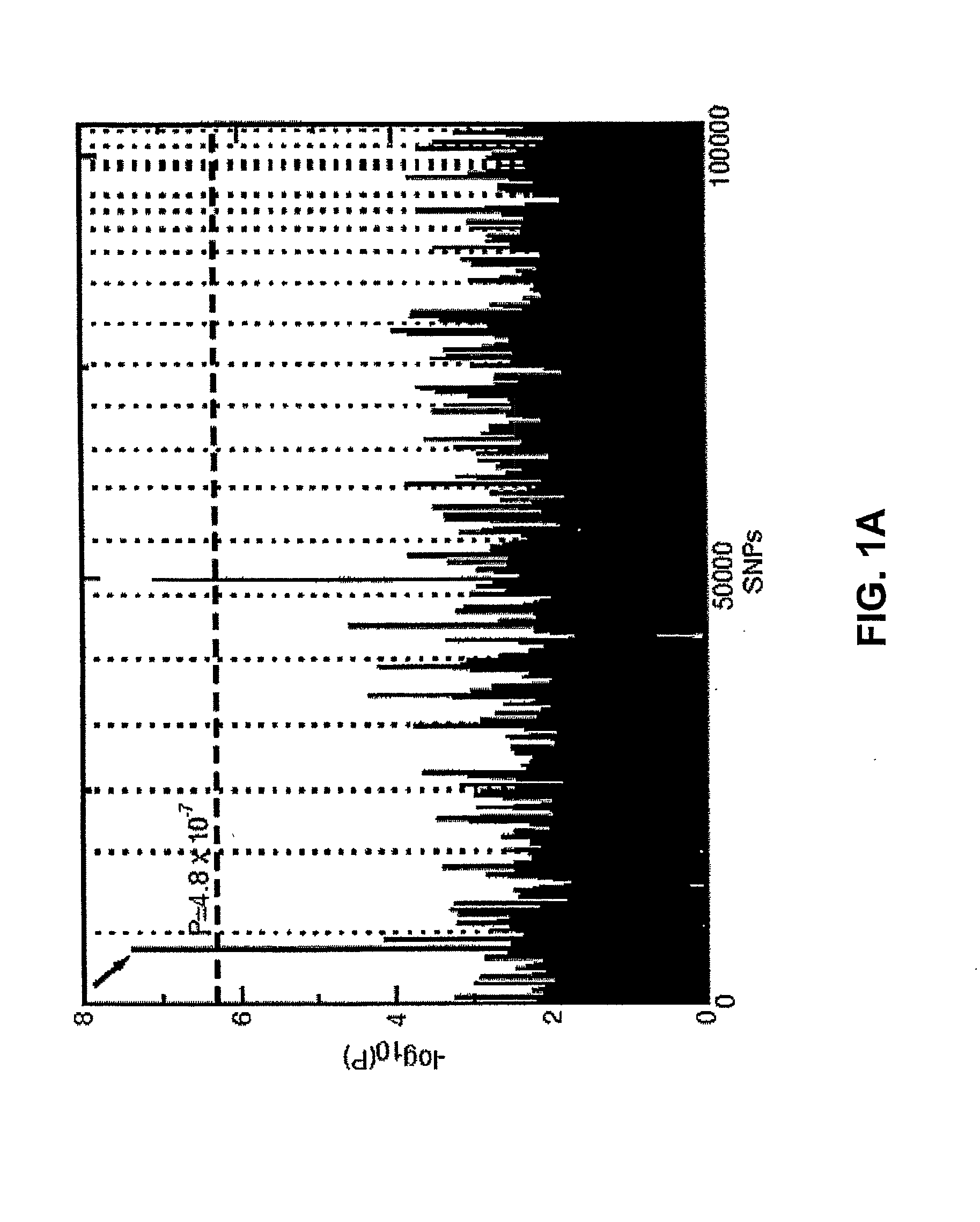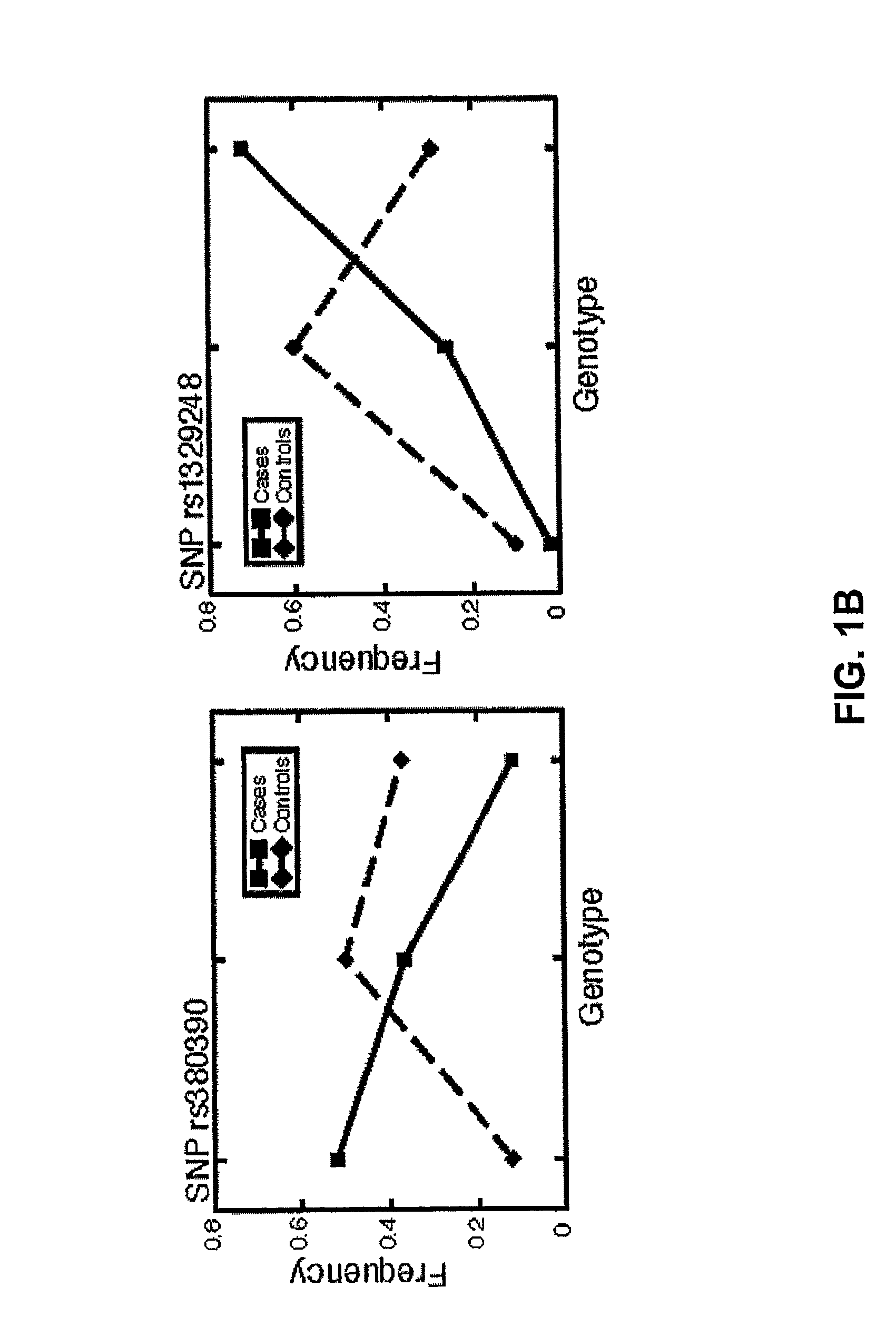Methods and Compositions for Treating Ocular Disorders
a technology for ocular disorders and compositions, applied in the field of methods and compositions for treating ocular disorders, can solve the problems that no treatment for this disease has proven to be broadly effective, and achieve the effect of reducing the activity of variant cfh polypeptides
- Summary
- Abstract
- Description
- Claims
- Application Information
AI Technical Summary
Benefits of technology
Problems solved by technology
Method used
Image
Examples
example 1
Whole Genome SNP Association for Genes Correlated with AMD
[0168]Described herein is a whole-genome case-control association study for genes involved in AMD. Two crucial factors were used in designing this experiment; clearly defined phenotypes were chosen for cases and controls. The definition of a case was based on both a quantitative photographic assessment of the presence of at least some large drusen combined with photographic evidence of sight-threatening AMD (geographic atrophy or neovascular AMD). The definition of a control was based on the study participant having either no drusen or only a few small drusen. Data was analyzed using a statistically conservative approach to correct for the large number of SNPs tested, thereby guaranteeing that the actual probability of a false positive is no greater than the reported p-values.
[0169]A subset of individuals who participated in the Age-Related Eye Disease Study (AREDS) (AREDS Research Group, Arch Ophthamol 119, 1417, (2001)) wer...
example 2
Genotyping and SNP Identification of Individuals in Study Population
[0170]Each individual was genotyped using the Affymetrix GeneChip Mapping 100K Set of microarrays (H. Matsuzaki et al., Nat Methods 1, 109 (2004)). This mapping assay consists of two chips (XbaI and HindIII) with approximately 50,000 SNPs each that are used for each individual. About 250 ng of genomic DNA was digested with two restriction enzymes XbaI and HindIII and processed according to the Affymetrix protocol (H. Matsuzaki et al., Nat Methods 1, 109 (2004)). The images were analyzed using GDAS software (Affymetrix). For the data obtained from each chip, two internal quality control measures were used: the call rate always exceeded 95% and heterozygosity on the X chromosome correctly identified the gender of the individual. Thirty-one identical SNPs were placed on both chips and checked that they yielded the same genotype for the same individual to ensure that no samples were confused.
[0171]Three experiments were...
example 3
Statistical Analysis of SNP Association with Disease Status
[0173]Allelic association with disease status was tested for each SNP. A 2×2 contingency table of allele frequencies was constructed. The Pearson χ2 value and a P-value were calculated, based on the central χ2 distribution under the null hypothesis of no association with 1 degree of freedom. This nominal P-value was corrected for multiple testing by applying the Bonferroni correction, in which only SNPs with a p-value less than 0.05 / 103,611=4.8×10−7 were considered. This produced a Bonferroni-corrected P-value This correction is known to be conservative and thus may “overcorrect” the raw p-values (L. M. McIntyre, E. R. Martin, K. L. Simonsen, N. L. Kaplan, Genet Epidemiol 19, 18 (2000)). While this technique may overlook real associations, it adjusts for the large number of multiple comparisons and yields p-values that do not underestimate the false positive rate.
[0174]Two methods of genomic control were used to look for pop...
PUM
| Property | Measurement | Unit |
|---|---|---|
| temperature | aaaaa | aaaaa |
| temperature | aaaaa | aaaaa |
| temperature | aaaaa | aaaaa |
Abstract
Description
Claims
Application Information
 Login to View More
Login to View More - R&D
- Intellectual Property
- Life Sciences
- Materials
- Tech Scout
- Unparalleled Data Quality
- Higher Quality Content
- 60% Fewer Hallucinations
Browse by: Latest US Patents, China's latest patents, Technical Efficacy Thesaurus, Application Domain, Technology Topic, Popular Technical Reports.
© 2025 PatSnap. All rights reserved.Legal|Privacy policy|Modern Slavery Act Transparency Statement|Sitemap|About US| Contact US: help@patsnap.com



